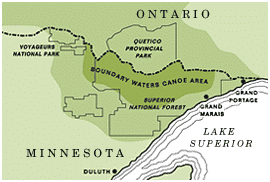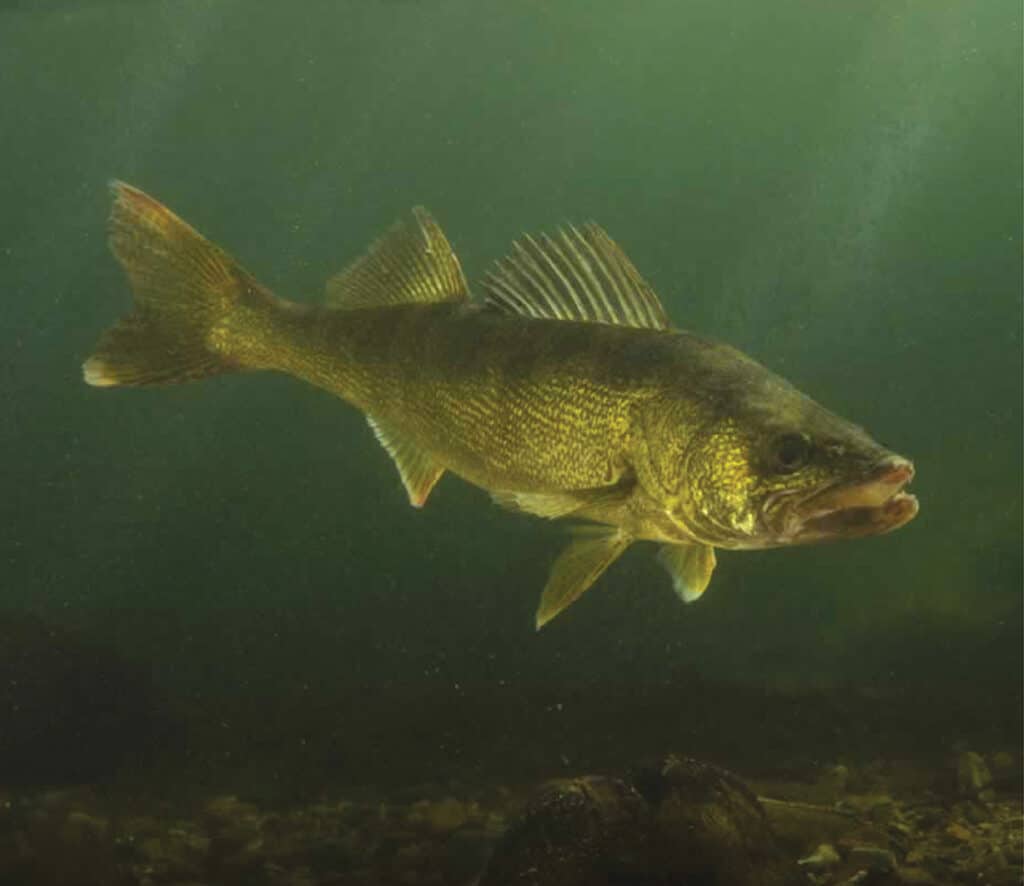
Crane Lake, a gateway to Voyageurs National Park, offers a range of recreational activities. Anglers flock there to fish for walleye, sauger, lake trout, and smallmouth bass. However, concerns about fish consumption are growing due to rising mercury levels. The Northern Lakes Scientific Advisory Panel (NLSAP), which monitors water pollution, has warned about elevated mercury concentrations in parts of northern Minnesota. The Minnesota Pollution Control Agency attributes most of the mercury in fish to global and local air pollution. However, organizations like the NLSAP argue that upstream sulfate pollution from taconite mines contributes to higher mercury levels in fish. Stakeholders across science, industry, and government are exploring solutions to reduce mercury exposure and protect water quality.
Updated 8/20/25
Opinions differ on source of pollution
Northern Minnesota is home to thousands of lakes. One of the largest, Crane Lake, marks the end of the road and the beginning of a vast network of interconnected waterways. It sits on the southern border of Voyageurs National Park (VNP) and spans 3,088 acres. Water trails along its eastern shoreline lead into the Boundary Waters Canoe Area Wilderness (BWCAW). Anglers from across the region flock to the lake’s cool, deep waters. Rivers in this area flow north, eventually reaching Hudson Bay in Canada. Further east, the BWCAW draws paddlers seeking remote adventures and excellent fishing. Centrally located in the wilderness along the Canadian border, Crooked Lake draws wilderness visitors seeking trophy-sized fish such as walleye, bass, or northern pike.
Although the Minnesota Pollution Control Agency (MCPA) reports a reduction in mercury emissions released into the atmosphere, mercury levels continue to increase, especially in game fish like walleye and northern pike. The state says that air pollution is the primary source of mercury in fish. The report explains that reducing mercury in fish requires significant reductions in mercury emissions from both Minnesota and global sources.
Each year, Minnesota Department of Natural Resources staff sample fish from about 150 lakes and rivers across the state. Their monitoring shows that most fish contain some mercury, with concentrations increasing from south to north. They’ve found that panfish generally have lower mercury levels than top predator fish. Using this data, the Minnesota Department of Health sets statewide fish consumption guidelines.
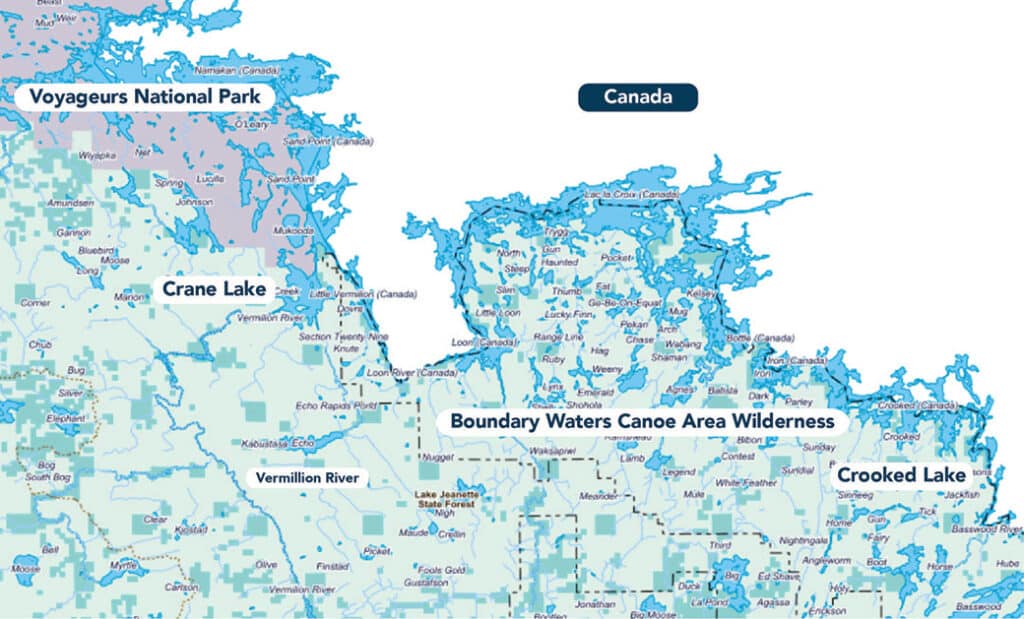
Panel links mining waste to toxic fish
Researchers are raising concerns about rising mercury levels in game fish. The Northern Lakes Scientific Advisory Panel (NLSAP), in partnership with the Minnesota Pollution Control Agency (MPCA), monitors water pollution in the BWCAW and VNP. Their research shows that mining exposes sulfate-rich rocks like pyrite to rain and oxygen. This process forms sulfate that washes from tailings and waste rock into nearby streams, wetlands, and lakes.
Sue Okerstrom, Principal Scientist at Lichen Labs and member of the NLSAP, informed state legislators that water tests detected sulfate pollution from mining waste leaching into northern rivers and streams. Affected waterways include the Sand River (which flows into Lake Vermilion), Voyageurs National Park, and Birch Lake Reservoir (which flows into the BWCAW).
She and other scientists warn that rising sulfate levels are driving up methylmercury concentrations in game fish. Okerstrom stated, “In 2024, 3,000 tons of sulfate mine waste flowed into Voyageurs National Park via the Vermilion River.” As a result, these rising sulfate levels contribute to increased methylmercury in game fish.
Pollution originates from upstream
The NLSAP found that sulfate pollution in VNP originates from two tailings basins in Virginia. Additionally, their data showed that pollution in the BWCAW comes from an open-pit taconite mine in Babbitt. These tailings basins and mines support taconite (iron ore) production, which is processed into pellets for steel manufacturing.
Crane Lake is the closest lake to the mines and is located on the southern edge of VNP. Testing shows a sulfate concentration of seven parts per million. This is four times higher than levels found in clean water. Walleyes in Crane Lake contain four times more mercury than those in Lake Kabetogama. Lake Kabetogama lies outside the mining-affected watershed. As water flows downstream, sulfate concentrations decrease due to dilution from cleaner upstream sources. This leads to lower levels of mercury contamination in fish.
If it were classified as commercial seafood, Crane Lake walleyes would rank second on the U.S. Food and Drug Administration’s list of seafood to avoid.
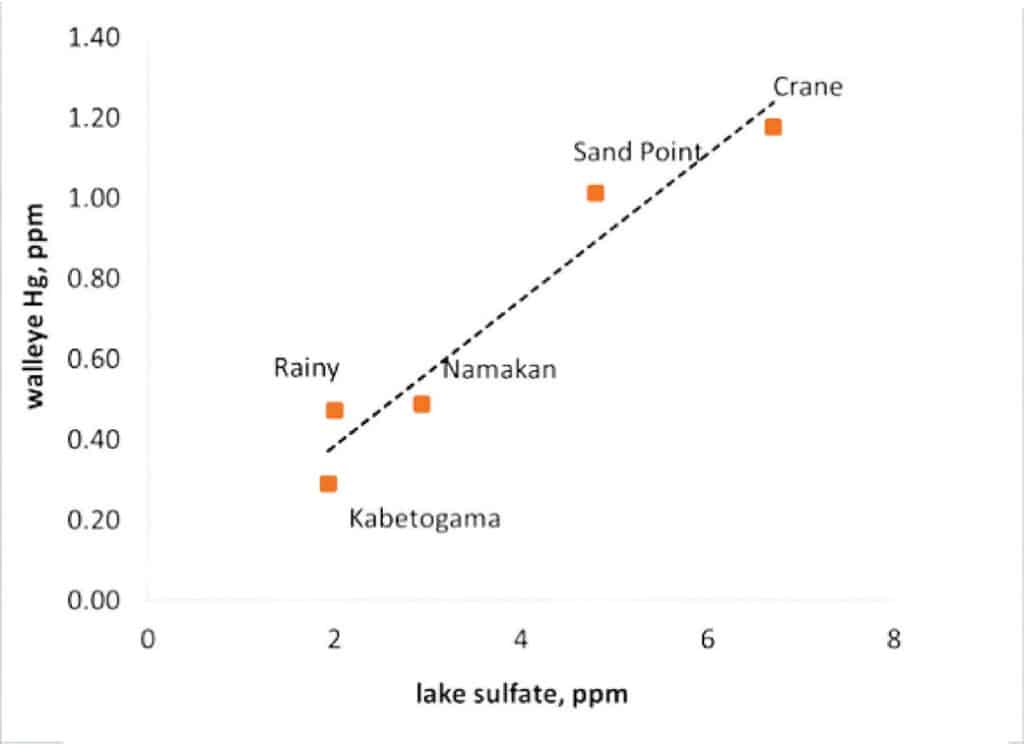
Understanding mercury contamination
Sulfate, a molecule made of four oxygen atoms, supplies oxygen to bacteria that convert mercury into methylmercury. This becomes a toxic compound that biomagnifies in fish as it moves up the food chain. A 2011 study found that 10% of infants born along the North Shore had concerning levels of mercury in their blood. Methylmercury also poses serious health risks to wildlife that rely on diets rich in fish.
Throughout the summer, NLSAP crews actively conduct water quality testing. They collect water samples from a chain of monitored lakes and rivers. The samples are then sent to a lab in Virginia for analysis using methods developed by the Environmental Protection Agency.
The forty-person NLSAP team brings together individuals from diverse backgrounds. Scientists like Eric Morrison, who holds a PhD in Organic Chemistry, have studied areas like Crane Lake for more than a decade. He believes the data speaks for itself and calls for “more meaningful conversations.”
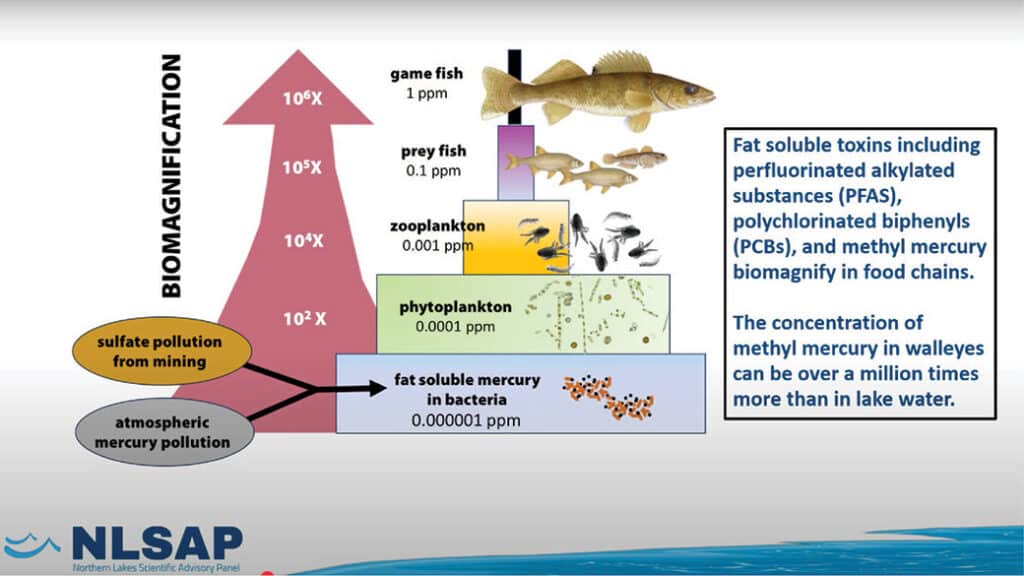
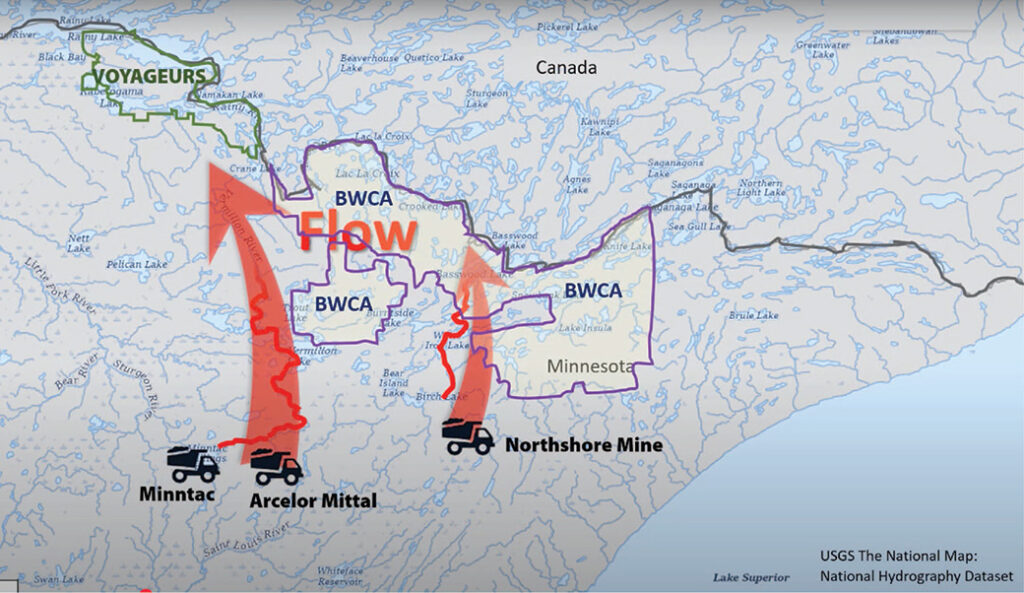
Over 500 lakes are listed as impaired
The state lists over 500 lakes across northeastern Minnesota as impaired because mercury levels in fish exceed safety standards. The MPCA website defines a body of water as “impaired” when it fails to meet one or more water quality standards.
These impairments are caused by multiple factors. They include mercury levels that lead to fish consumption advisories, excess nutrients that fuel algae growth, sediment that clouds the water, and bacteria that make swimming unsafe. Other causes include conditions that harm fish and aquatic insects, PFAS found in fish tissue, and sulfate levels that may inhibit wild rice regeneration.
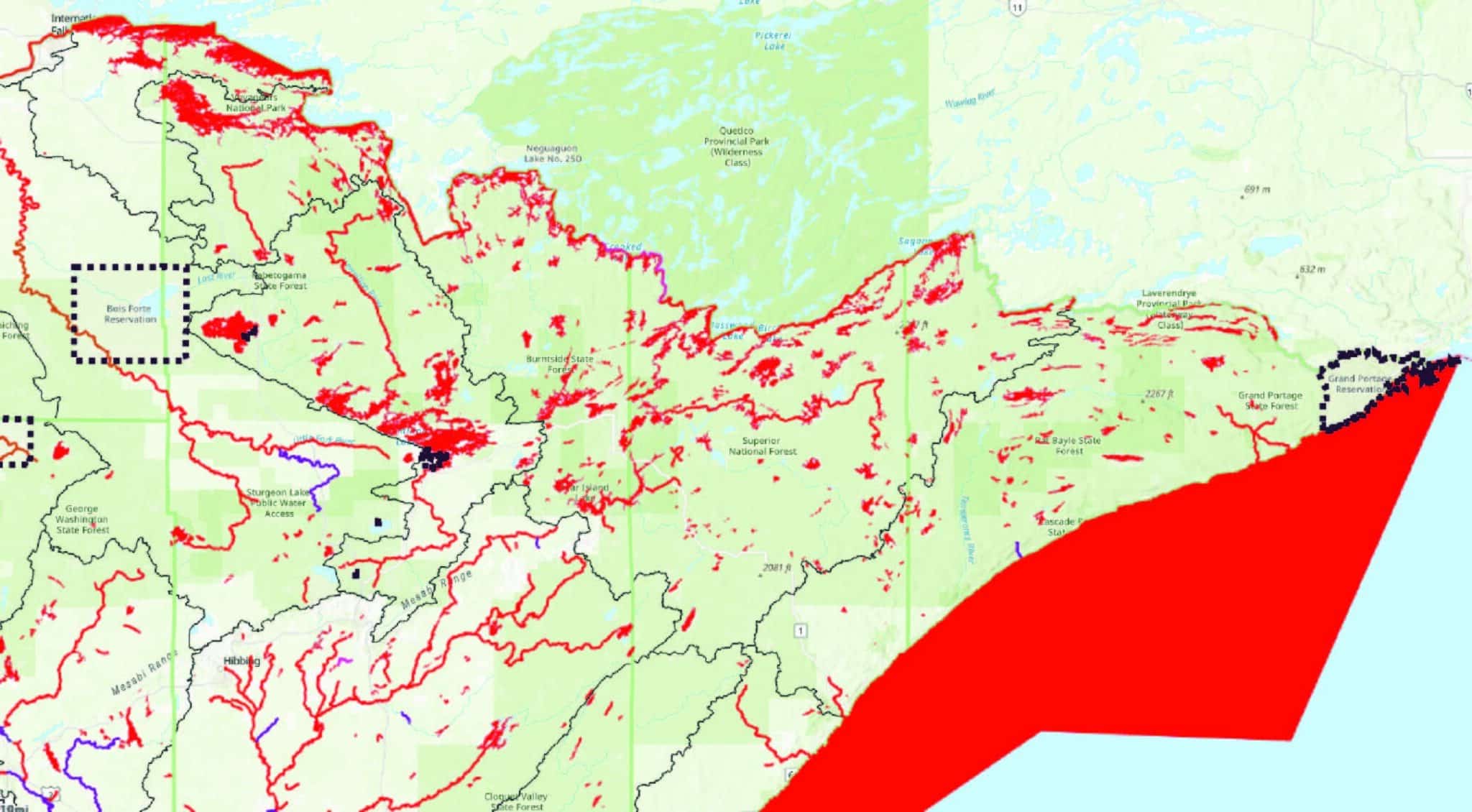
State to reduce air emissions
The MPCA is taking a new approach to address mercury pollution. Their goal is to reduce mercury input from human-related sources, both within Minnesota and from external, out-of-state sources, by 93%. This reduction is part of a plan to meet the state’s mercury Total Maximum Daily Load (TMDL). The TMDL is a regulatory framework under the U.S. Clean Water Act. They’re responsible for setting a statewide mercury reduction target to ensure fish are safe to eat.
To meet this goal, Minnesota must reduce in-state mercury air emissions to 789 pounds per year. This includes establishing regulations for coal-fired plants that require mercury-reducing technology or switching to cleaner energy sources. Other industries, such as taconite processing and waste incinerators, must also follow stricter mercury emission standards. These standards include updated filters and scrubbers. They aim to achieve this reduction by the end of 2025.
Biological filter could clean up pollution
A local company believes it has found a way to bridge the divide between mining and environmental protection. Jeff Hanson, a founder of Clearwater Biologic, says his team has developed a practical solution. Hanson is a lifelong resident of Birch Lake, just south of Babbitt. He explains that his company has created and tested a sulfate biological clean-up system.
In a meeting with Babbitt council members, The Ely Echo reported that he described the system as “low capital, scalable, and locally produced, right here.” He added that the system uses renewable energy. It removes contaminants using bacteria already found in the water, along with direct reduced iron and local labor.
Hanson does not oppose mining; it’s what originally brought him to northern Minnesota. “There’s no reason we have to choose between supporting mining and protecting the environment,” he said in a 2024 TEDx talk. He believes their system offers a method to treat water and remove sulfate from a mine pit lake or tailings basin pond. This process would happen before the water flows downstream. It’s a system of floating platforms that hold large, flexible bags filled with fibers designed to attract sulfate-reducing bacteria.
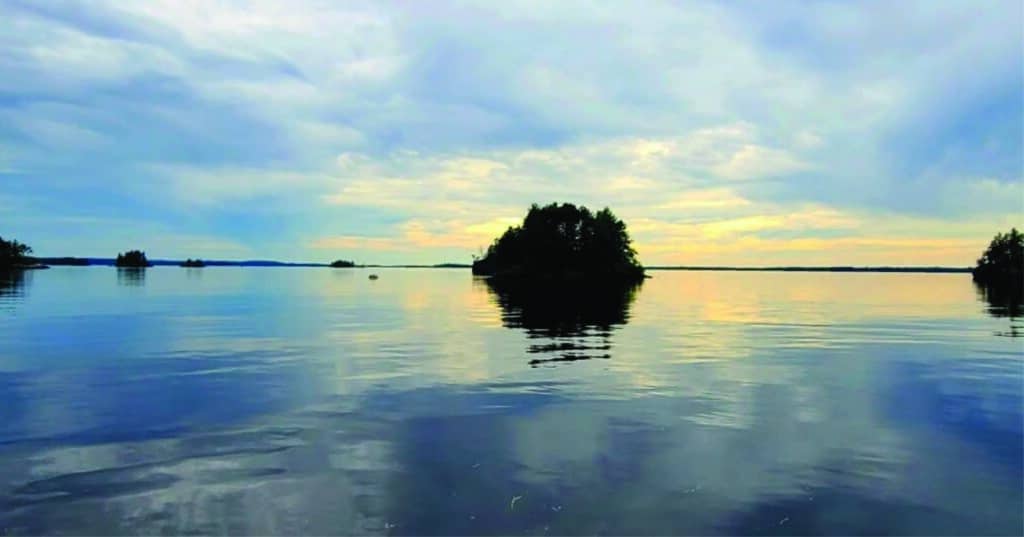
Cautions on fish consumption
Despite ongoing efforts, officials continue to urge caution when consuming game fish. The MPCA found mercury levels in fish tissue that exceeded safety standards as early as 1988. Those levels still surpass recommended limits today. Current guidelines advise the general public to limit their intake of game fish.
The Minnesota Department of Health (MDH) specifically advises people who are pregnant, may become pregnant, are breastfeeding, plan to breastfeed, or are under age 15 to avoid eating multiple species of fish from areas like Crane Lake. If they choose to eat walleye, they should limit consumption to once a month.
In response, Morrison asks, “If you look at the numbers, how can people, especially pregnant women, continue to consume such heavily contaminated fish?”
This spring, the MDH updated fish consumption guidelines for several lakes and rivers. The changes affect ten counties, including parts of northern Minnesota. The department made the changes in response to elevated levels of per- and polyfluoroalkyl substances (PFAS) found in fish. PFAS are man-made “forever chemicals” derived from plastics that resist breaking down.
Although the debate over how best to address sulfate-caused mercury pollution continues, Morrison expressed hope for productive conversations among stakeholders. The mercury problem isn’t going away anytime soon. However, groups like NSLAP believe in taking action and considering all approaches. “Even if we don’t completely agree, we need to pull up our sleeves and start working better together,” Morrison said.
More info:
- Across northern Minnesota’s pristine lake country, mercury contamination is growing – Clearwater Biologic
- Northern Lakes Scientific Advisory Panel Boundary Waters Day at the Capitol – NLSAP
- Fish consumption guidance updates in some impacted waterbodies by county – Minnesota Department of Health
- Reducing mercury releases – Minnesota Pollution Control Agency
- Statewide mercury TMDL – Minnesota Pollution Control Agency
- Native Bacteria and Minnesota Iron Eliminate Sulfate – Jeffery Hanson, Clearwater Biologic
- Fish Consumption Guidance – Minnesota Department of Health

